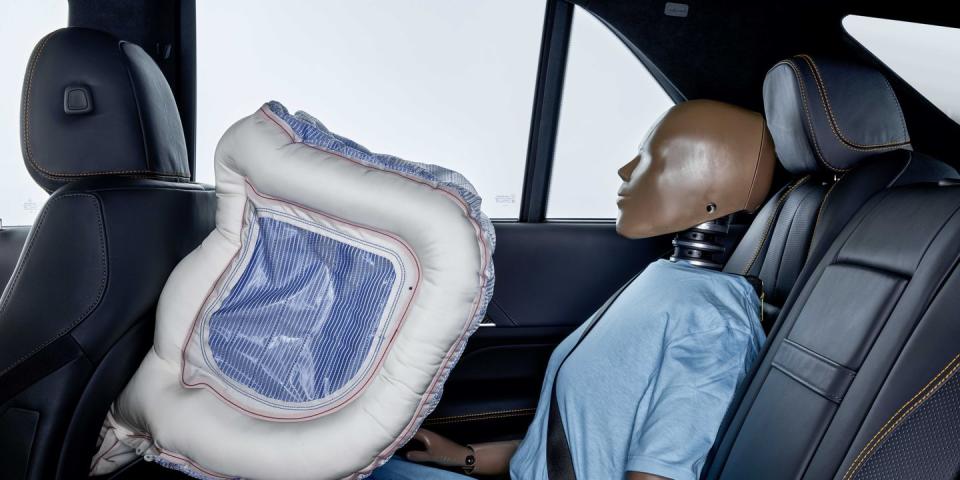An Airbag for the Back Seat? Mercedes-Benz Is Developing a Clever One

Frontal airbags, typically the realm of front-seat supplemental restraint systems, are being developed by Mercedes-Benz for rear-seat passengers.
The airbags are only partially powered (inflated), unlike normal, fully powered airbags.
Even if the rear-seat airbags impact objects or child seats instead of human occupants, they give way instead of driving into them.
Designing a frontal airbag for a rear-seat passenger in a vehicle is a totally different exercise than drawing up a frontal airbag for front-seat passengers, even if they serve the identical purpose of reducing forces on occupants' heads and necks. Mercedes is previewing a novel take on the concept-which has yet to reach widespread or even nascent adoption in the marketplace-on its ESF 2019 safety car concept.
To account for the wide variability in rear-seat passengers' size and seating positions, the Benz's rear-seat airbags are shaped entirely differently from their front-seat counterparts so as to conform to smaller-sized occupants (children, for example) and child seats.
Instead of a single, large-volume powered airbag that deploys via a gas charge, the Mercedes rear-seat bags aren't really bags at all. Instead, they're partially powered tubular structures-like a tent, not a balloon. When the bag goes off, a gas charge similar to that used in normal airbags inflates a series of tubes, which serve as a lattice-like structure for a "bag" that cushions an occupant's forward movement in a frontal collision.
The tubes, Mercedes explains, will morph and bend around objects in the rear seats that aren't human beings, including child seats and cargo. Should it deploy for an actual human person, the airbag's tube structure supports a special cloth "skin" that acts as a great big one-way air valve.
This is tricky to explain, but think of it this way: As the tube structure inflates, expanding the cloth skin into an airbag-shaped object, air is displaced-from the volume where, milliseconds earlier, no airbag existed-into the now-formed airbag. The special cloth skin allows this air into the bag, but not out of it, except through the typical vents found in powered airbags to release pressure as the occupant impacts the bag.
What's clever is how the "bag" isn't powered, it's merely an air-filled pillow of sorts supported by the tubular powered structural elements that aren't intended to handle any occupant-slowing duties. Thus the rather large-volume bag can inflate both quickly (because the entire volume isn't powered) and relatively gently, meaning it won't blow up a child seat should one be fitted. The tubular elements are designed to "give way when contacting obstructions," so their "force is directed past the obstacle rather than against it."
It's a setup we imagine will find its way into, say, the next-generation Mercedes-Benz S-class (the flagship is due for a total redesign soon, and historically has introduced new-to-Mercedes technologies to the world), though Benz isn't saying when or if the rear-seat airbags are headed to production. It's part of a clear interest on Mercedes' part in rear-seat passenger safety-the ESF 2019 safety concept also boasts heated, USB-port-equipped seatbelts (the ports only work when the belt is buckled) intended to incentivize their use. The only bad news? The center rear-seat passenger is kinda out of luck-with no front seat ahead of them, the rear-seat airbag for now seems like it's reserved for outboard rear passengers only.
('You Might Also Like',)

 Yahoo Autos
Yahoo Autos